
Since the dawn of time, people have been fascinated with contrasts – the existence of opposites and where extremes become vital elements in the balance of nature.
Such is the case of black and white, the opposites of the colour and energy spectrum.
In ancient Chinese philosophy, black and white are often represented by “yin” and “yang” which best describes how opposites or contrary forces co-exist to establish balance and maintain the natural order of everything in the universe.
Black and white gemstones hold similar levels of attraction – and mystery – which makes them popular and sought-after jewellery pieces.
Black and White diamonds
Considered one of the most precious and hardest materials on earth, diamonds are typically formed between 150 kilometres beneath the earth’s crust under intense pressure and temperature.
It is the only gem made from a single element, which is 99.95 per cent carbon and the other 0.05 per cent comprise one or more trace elements whose atoms are not part of the stone’s basic chemistry but influences its shape and colour.
The distinctive optical and physical properties of the diamond enable it to possess the highest possible lustre among transparent gemstones, also known as ‘adamantine lustre’ after the Greek word ‘Adamas’, which means ‘invincible’ and which be taken to mean ‘diamondlike’, given diamond’s hardness.
Black diamonds are known to achieve their colour from large quantities of minute mineral inclusions such as pyrite, graphite, or hematite that are distributed throughout the stone.
These inclusion concentrations are responsible for the colouration, allowing natural black diamonds to achieve the colour ranging from near-colourless to brown or olive green.
Typical natural-colour black diamonds are completely opaque, with a high lustre and achieve an almost metallic appearance.
Since these diamonds are heavily included, cutting and polishing them requires expertise and must be set with great care.
However, a fine natural-colour black diamond is a beauty in itself and makes it distinct yet more affordable than other diamonds.
Most black diamonds used for jewellery have been treated to induce their colour. Many begin as grey, which is heavily included and fractured.
The stones are subjected to high-temperature/lowpressure treatment, which graphitises the fractures to make them turn black.
Alternatively, artificial irradiation of off-colour diamonds produces a dark green hue to make them appear black.
On the other hand, the term ‘white’ usually attributed to colourless diamonds that fall within the D-to-Z colour GIA scale or chart, is surprisingly not purely white at all.
The hues range from colourless – similar to a drop of pure water - to clear stones with tints of light yellow, light brown or grey.
The rarity and value of white diamonds are based partly on how closely they achieve ‘colourlessness’ - the more colourless the diamond, the rarer and more expensive it gets.
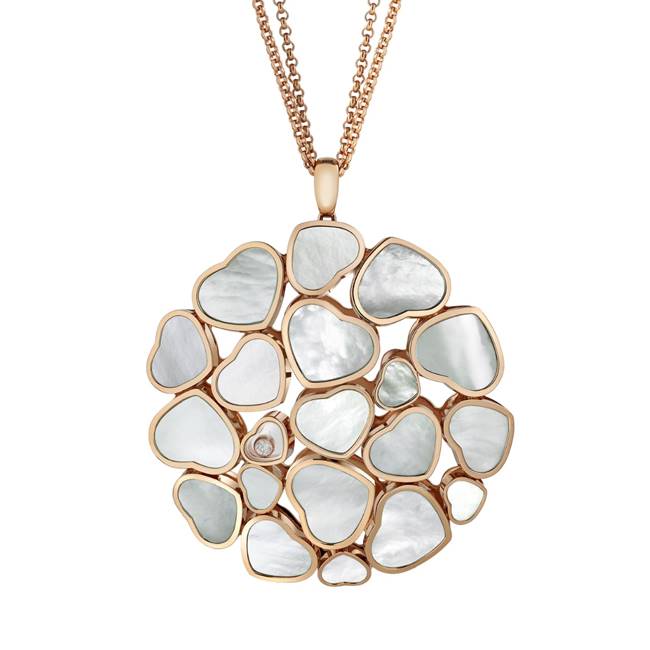 | 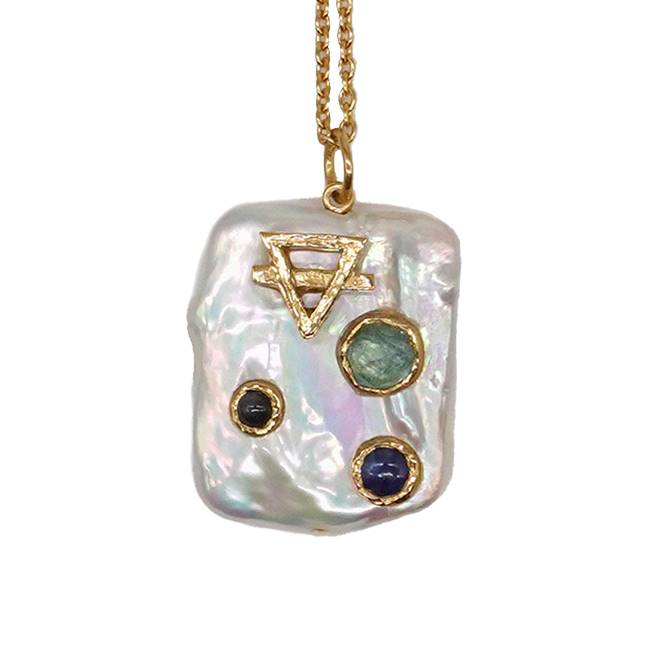 | 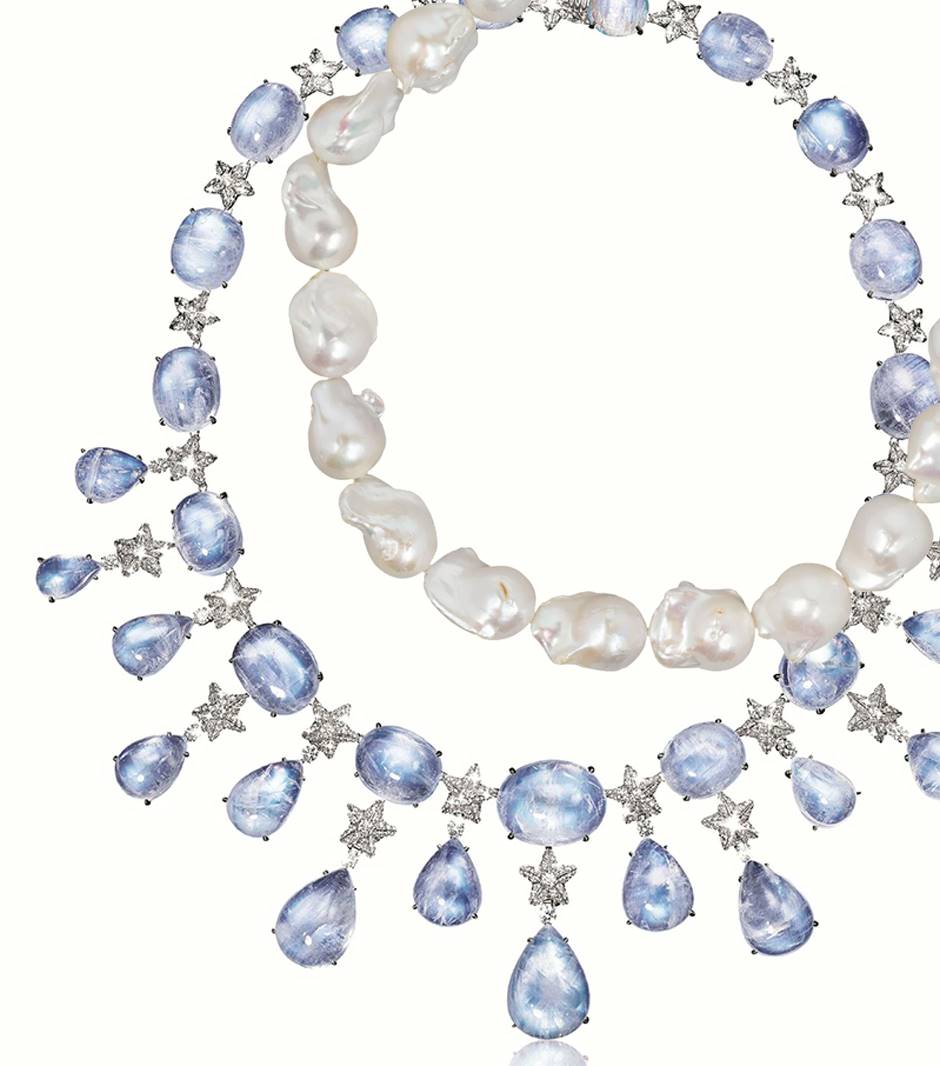 |
| Above: Chopard | Above: Moon Tree |
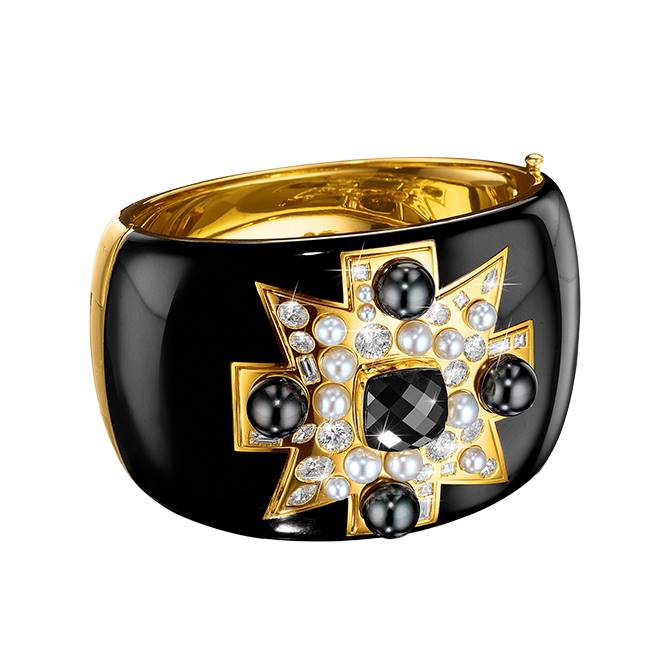 | 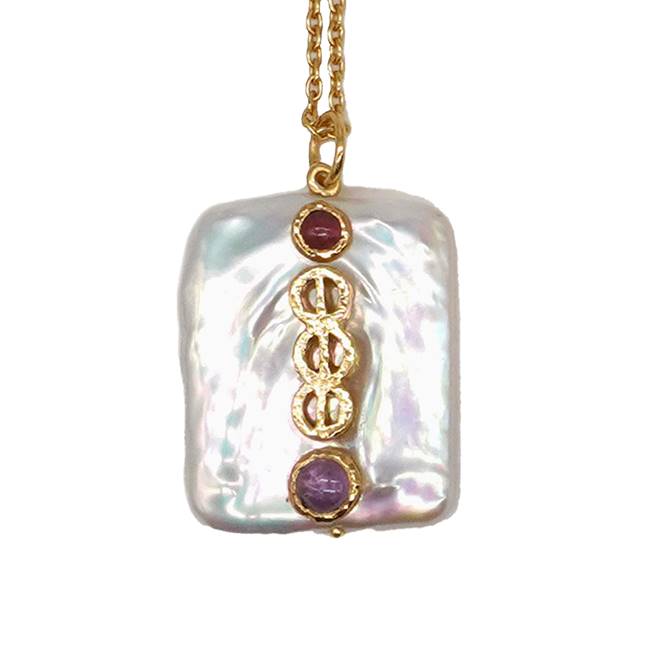 |
| Above: Verdura | Above: Moon Tree | Above: Verdura; Christie Nicolaides |
Onyx
For centuries, artisans have carved intricate and attractive cameos using black and white onyx the most popular of which are cabbed or faceted solid black onyxes.
A type of chalcedony, onyx is a form of microcrystalline quartz that is distinguished by its straight, nearly parallel layers or bands of colour, allowing highly-skilled gem carvers to work on layers to create intaglios and cameos with extraordinary depth and contrast.
The most common onyxes are those with white and black layers. The gems with a black colour base and a white upper layer are called “true” or “Arabic onyx.”
The onyx, especially the black variety, was regarded as a popular gemstone during the Victorian era (1861-1885), particularly as “mourning” jewellery and although it still bears the same reputation in some Western cultures, its dark and opaque appearance is used to complement clear and coloured gems – including diamonds - in a variety of jewellery pieces.
Moonstone
Moonstone is a variety of feldspar composed of two minerals, orthoclase and albite. The orthoclase and albite separate into alternating layers during formation, such that when light falls between these thin layers the rays get scattered to produce a phenomenon called adularescence.
Adularescence is the sheen that radiates from beneath a gem’s surface and appears to move along with the light source, producing an effect resembling moonlight on water.
The delicate beauty of the moonstone makes it one of the most popular gem-quality varieties of feldspar minerals.
The clarity and colourless appearance of the moonstone and the blue light intensity of its adularescence gives the stone a higher value.
A June birthstone, moonstone is revered for its white and bluish light effect and while it is somewhat fragile, it is a popular choice as a centre stone.
Labradorite
Labradorite is a calcium-enriched feldspar mineral discovered in Labrador, Canada which possesses an iridescent optical effect known as labradorescence.
The mineral is made of thin and tabular shapes with colours ranging from purple to grey-blue, green, yellow, and brown, which has a pearly lustre and some specimens produce a distinctive schiller effect.
White labradorite – also commercially known as rainbow moonstone – is a popular jewellery piece due to light effects that reflect on a white background.
Some labradorite varieties are known to exhibit high degrees of labradorescence called spectrolite and are among the most preferred types used for jewellery.
White and black opal
Ancient Romans considered opals as the most valuable among precious stones since it was known to have many colours that were also found in other gemstones.
Opals are known for their unique play-of-colour, which determines how precious the stone is.
The white or light opal is distinguished as translucent to semitranslucent, with play-of-colour against a white or light grey background colour.
While it is considered to be the least expensive among other precious opal varieties since it is the most common, it can display any colour of the spectrum to reflect a beautiful play-of-colour.
On the other hand, the black opal is considered the most valuable variety of opals due to the stone’s dark body tone and vibrant play-of-colour. Distinguished as translucent to opaque, with playof-colour against a black or other dark background. Black opals are hard to find and can fetch prices of up to $AU15,000 per carat.
In the 1980s, Australia became the world’s major source of opals when mines began commercially producing the stones.
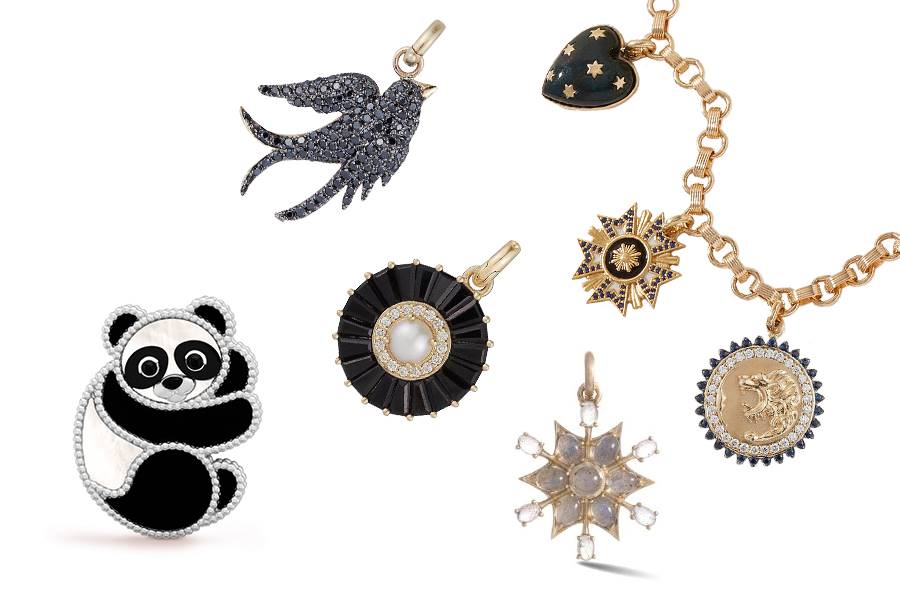
|
| Above: Panda - Van Cleef & Arpels; Charms - Storrow |
Obsidian
Obsidian is a form of natural glass and comes in numerous attractive varieties. During prehistoric times, people have used obsidian to make jewellery and carvings as well as cutting tools such as knives and spears.
Commonly found in large pieces, lapidaries frequently cut obsidian into cabochons, beads, and carvings. The faceted pieces appear dark, except when cut into small pieces and can be made into delicate jewellery stones.
This most popular variety is the snowflake obsidian which gets its name from inclusions of snowflake-like spherulites of white cristobalite, frequently used by jewellery-makers as beads and cabochons.
Pure obsidian is distinguished for its dark appearance, though the colour varies depending on the impurities found in the stone. Iron and other elements give the obsidian a dark brown to black colour, while some black obsidians contain nano inclusions of magnetite- a form of iron oxide.
Only a very few obsidian specimens are colourless.
Black and white pearl
Considered as one of the best-loved gems of all time, pearls come in a wide variety of colours, the most popular of which are white and cream colour pearls.
Natural pearls are formed when a microscopic irritant enters the bodies of certain molluscs, while cultured pearls are done by inserting a bead or piece of tissue that the mollusc coats with nacre.
Black, grey, and silver pearls are fairly common, with the main colour - or bodycolour - is often modified to induce additional colours called overtones, which are pink, purple, green, or blue.
Some pearls also show the iridescent light effect known as ‘orient’.
Pearls are commonly used for bead necklaces and bracelets or set in solitaires, pairs, or clusters for earrings, rings, and pendants. Larger pearls are also popular with creative jewellery designers.
Akoya cultured pearl farms are primarily found in Japan and China, especially along the southern coasts of Guangdong and Guangxi provinces.
South Sea cultured pearls are farmed from the northern coast of Australia through Indonesia to the southern coast of Southeast Asia, with large operations in the Philippines as well. The Gambier Islands and the Tuamotu Archipelago – both in French Polynesia - are two of the major sources of rich black Tahitian pearls.
Chalcedony
Chalcedony is named after the ancient Greek seaport ‘Chalcedon’ (khalkedon) in Asia Minor and the Latin word ‘chalcedonius’.
Chalcedony, which is found worldwide, is a microcrystalline variety of quartz, meaning its microscopic quartz crystals require high magnification for it to be seen.
When crafted as jewellery, chalcedony is distinguished by its light blue translucent and waxy form, which can be found in be many colours - chrysoprase is a popular example, the sought-after apple green variety.
Ideal for carving cameos, intaglios, ring bezels and beads, Chalcedony has been used since ancient times in the Mediterranean region and Central Asia.
Read eMag